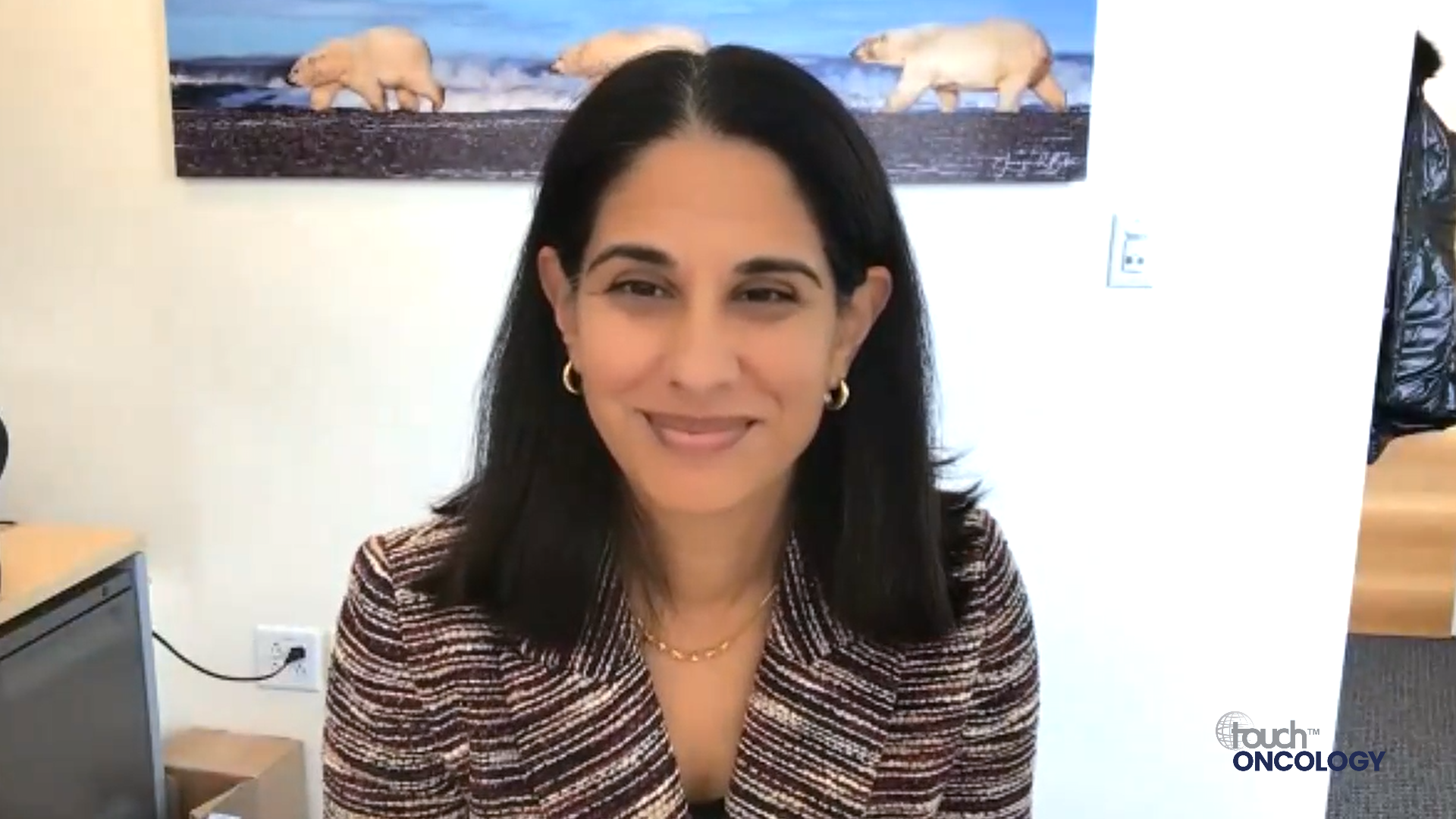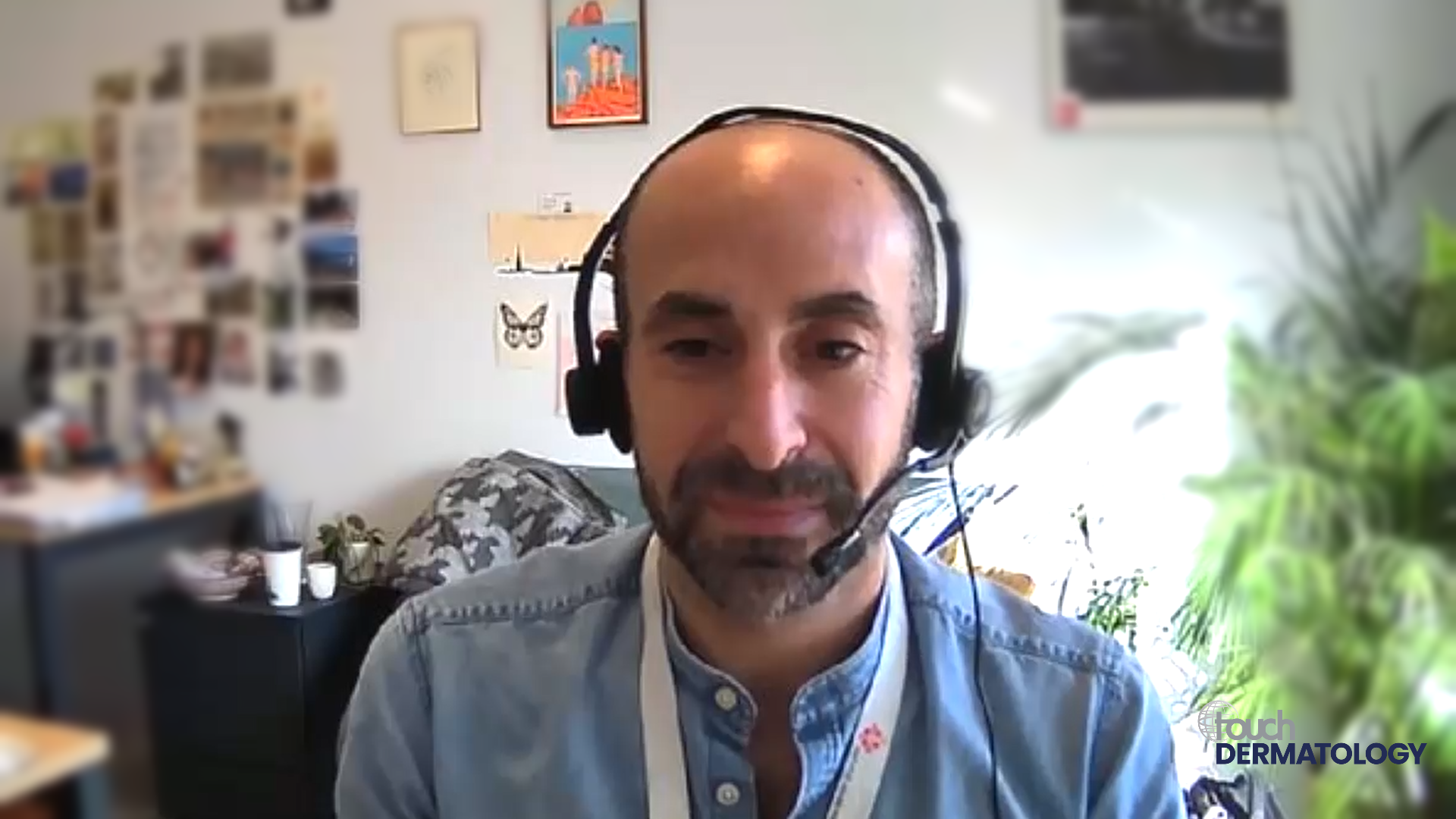Angela DeMichele, ASCO 2023: The PALLAS trial, palbociclib with adjuvant endocrine therapy in patients with stage II-III breast cancer
The PALLAS trial assessed the efficacy of adding palbociclib to adjuvant endocrine therapy in patients with stage II-III breast cancer. In this touchONCOLOGY interview, we speak with Dr Angela DeMichele (Abramson Cancer Center, University of Pennsylvania, Philadelphia, PA, USA) to discuss the PALLAS trial and how it compares to the other CDK4/6 inhibitor adjuvant trials, including monarchE and NATALEE.
The abstract entitled ‘Adjuvant Palbociclib for ER+ Breast Cancer (PALLAS Trial (ABCSG-42/AFT-05/PrE0109/BIG-14-13): A Preplanned Analysis of the Stage IIA Cohort’ was presented at the American Society of Clinical Oncology Annual Meeting, 2–6, June 2023.
Questions:
- What is the treatment paradigm of advanced hormone receptor positive, HER2-negative breast cancer? (0:25)
- What is the mechanism of action of palbociclib? And what is the rationale for using this in patients with advanced hormone receptor positive, HER2-negative breast cancer? (2:27)
- What are the aims, design, and eligibility criteria of the PALLAS trial, and what were the outcomes? How does the PALLAS trial compare to the other CDK4/6 inhibitor adjuvant trials, including monarchE and NATALEE? (5:53)
- Where should future studies be focused? (10:16)
Disclosures: Angela DeMichele has received grant/research support from Genentech, Neogenomics, Novartis and Pfizer.
Support: Interview and filming supported by Touch Medical Media. Interview conducted by Danielle Crosby.
Filmed as a highlight of ASCO 2023
Access more content on Breast Cancer
Transcript:
My name is Dr Angie D Michele. I am a Medical Oncologist and co-leader of the breast cancer program at the Abrams Cancer Center of the University of Pennsylvania.
Q. What is the treatment paradigm of advanced hormone receptor positive, HER2-negative breast cancer?
The treatment paradigm currently for women and men who have advanced hormone receptor-positive breast cancer is to combine an endocrine agent with a CDK4/6 inhibitor. Typically, we would start with an aromatase inhibitor unless the patient has relapsed and recurred while on an aromatase inhibitor. But if that is not the case a patient would typically start with one of the aromatase inhibitors. And then the question becomes, should you add a CDK4/6 inhibitor right away or wait until the second line? And this has been a bit of a controversial issue. Either way, the patient will receive a CDK4/6 inhibitor, either first or second line. Once that therapy ceases to continue working, then second line, we would typically try to continue an endocrine approach rather than moving to chemotherapy. However, if the patient has a rapidly evolving disease or an impending visceral crisis, sometimes we do have to move to chemotherapy.
I think it has been very interesting to see data in the last year showing that endocrine therapy combined with ribociclib, was as effective and in fact more effective than starting with chemotherapy. So the idea that we could use endocrine therapy and a CDK4/6 inhibitor for a long period of time in almost every patient prior to their needing to move to chemotherapy is a wonderful advance in our field. It gives patients an option that is less toxic than chemotherapy and all oral regimens with the exception of fulvestrant, and also just something that just can afford a really good quality of life.
Q. What is the mechanism of action of palbociclib? And what is the rationale for using this in patients with advanced hormone receptor positive, HER2-negative breast cancer?
Palbociclib is one of the three CDK4/6 inhibitors that are currently approved for use, both in the United States and other parts of the world. These drugs block CDK4 and CDK6 to varying degrees. The importance of that is that typically, when CDK4 or CDK6 bind to cyclin d, that then pushes the cells forward within the cell cycle. So that is one of the primary mechanisms that allow breast cancer cells to grow and divide. So by blocking CDK4/6, one can stop the cell cycle, and that stops the cells from dividing, essentially makes them stop growing.
What is interesting is that early studies show that this is really synergistic with signaling through the oestrogen receptor and that by inhibiting both the oestrogen receptor with an anti-oestrogen therapy, and CDK4/6 through one of these inhibitors, one could really significantly boost the effect of an anti-oestrogen agent. So prior to the advent of CDK46 inhibitors, patients would take just an anti-oestrogen, aromatase inhibitor or fulvestrant or tamoxifen, and typically would respond to that therapy for about a year.
Once CDK4/6 inhibitors became available and we began combining them, we saw that there was really a significant increase in the amount of time the patients could respond to an anti-oestrogen. In fact, patients were on average responding for about 2 years. So that was really extending at the time to respond to first-line therapy by about a year, in expanding the time to even responding to second-line therapy for almost that long. Now for two out of the three therapies, ribosyclib, and abemacyclib, that is also translated into living longer. So an improvement in overall survival.
I have not been able to see an overall survival benefit to palbociclib, but I think that that is in part due to a couple of factors. Number one, the trials did not really power the the number of patients included and were not designed to see overall survival. So they’re a little underpowered. That may be the reason why we don’t see that with palbociclib. That’s another palbociclib is a little less potent. Than riboseyclib and abemacyclib in its CDK46 inhibition. Therefore, it is possible that it just does not have as great an effect as long in effect as you might see with one of the other drugs. But regardless, I think, for progression free survival, which is really an important endpoint in advanced breast cancer, all three drugs, including palbociclib, are very beneficial, and we use them as part of standard therapy.
Q. What are the aims, design, and eligibility criteria of the PALLAS trial, and what were the outcomes? How does the PALLAS trial compare to the other CDK4/6 inhibitor adjuvant trials, including monarchE and NATALEE?
PALLAS was designed as an adjuvant trial of palbociclib. This was based on the idea that we were seeing this significant prolongation of progression free survival in the advanced setting, with palbociclib in combination with endocrine therapy, and it has long been the sort of paradigm within our field to move drugs that are active in the advanced breast cancer setting into the early breast cancer setting with the idea that if it works in metastatic disease, it ought to work even better in a situation where patients may only have micro-metastatic disease. And that we could use effective therapies early on to cure a greater number of patients rather than waiting until they reached metastatic setting that is currently still incurable. So the rationale was to move it up into the adjuvant setting.
PALLAS was designed as a randomized phase III open label study, where patients received either their standard endocrine therapy or their standard endocrine therapy plus 2 years of palbociclib. We enrolled patients across the globe, really, to this trial if they had either stage II or III breast cancer. Now, PALLAS did not specify that these patients needed to have another high risk feature.
This is important because the other two adjuvant trials, NATALEE and monarchE, also enrolled stage II and III patients, but both of those trials stipulated that the patients also had to have other high risk features.
Now, why is that important? It is important because number one, it could impact the ability of the drug to work. So if we restricted the activity of the drug to just those tumors that are highly proliferative or more aggressive, then you’d want those patients really enriched within the clinical trials. The second thing is that you know, without enriching the clinical trial for those patients, you might might not have as many events; therefore, you would not be able to see a benefit to the to the drug emerge. So PALLAS was designed without enrichment for high risk disease, and so the patients in PALLAS were not at as high a risk for an early event, meaning a recurrence to progressive metastatic disease within the first 2–3 years. The other trials did enrich, and so they had more patients having those early events.
PALLAS did not show a benefit, to the addition of 2 years of palbociclib to standard endocrine therapy. monarchE and NATALEE did show a benefit to the addition of the CDK4/6 inhibitor.
So, we have three trials, one is negative, two are positive, but the two positive trials enriched significantly for much higher risk patients who had more aggressive tumours.
The other important thing to point out is that we are only looking at results in these trials in the first 3–5 years from patients completing their initial therapy and even just from their diagnosis. We know that oestrogen receptor positive breast cancer is a disease that can relapse over a patient’s lifetime. And so, yes, we do see a benefit to abemacyclib and now ribosyclib in reducing the number of these early relapses, we did not see that benefit to palbociclib. But what we do not know yet is whether these drugs will prevent relapses across a patient’s lifetime. On-going follow-up is incredibly important with these trials. To see if the benefits persist, to see if there’s an impact that’s either greater or lesser, to later recurrence and we will want to be following these patients for a very long time to try to understand those issues.
Q. Where should future studies be focused?
In addition to using stage as a way to look at patient’s responsiveness, The other really important issue is going to be looking at tumour biology. As mentioned, the monarchE and NATALEE trials enrich for patients who had higher risk factors. What that means is that those tumours may be biologically different than the tumours in the PALLUS trial. Therefore, on-going studies are now going to be actually looking at the tumours themselves. In PALLUS, we actually collected tumour blocks on all 5,700 patients who enrolled to the trial. This is a gold mine, because we are going to be able to look at those tumour blocks and understand whether there is a biological subset of patients who did benefit from palbociclib.
We want to figure out whether there is a group in whom this addition of this drug could be useful based on their biology. The problem, sometimes with doing very large trials, that do not hone in on a specific biologic feature means that that particular group could be really drowned out by all the other patients who are not particularly at risk. Another way to look at that issue is also by looking at circulating tumour DNA, which is something we can look at in real time.
The idea here is that rather than simply trying to predict who’s at risk for relapse, circulating tumour DNA, meaning fragments of tumour DNA in the bloodstream that we can find in real time. We believe now can help us identify those patients who truly have the microscopic disease that we are trying to treat. And those are the patients for whom we think the benefits of these drugs will be greatest. And so we have been collecting serial blood samples in the PALLUS trial to enable us to look at this specific group of patients, the group that we think is most likely to benefit, to the addition of palbociclib.
So I am very excited for the future in being able to look at these tissue and blood correlative science studies that will really help us drill down into rich tumours and therefore which patients are most likely to benefit from the drugs.







